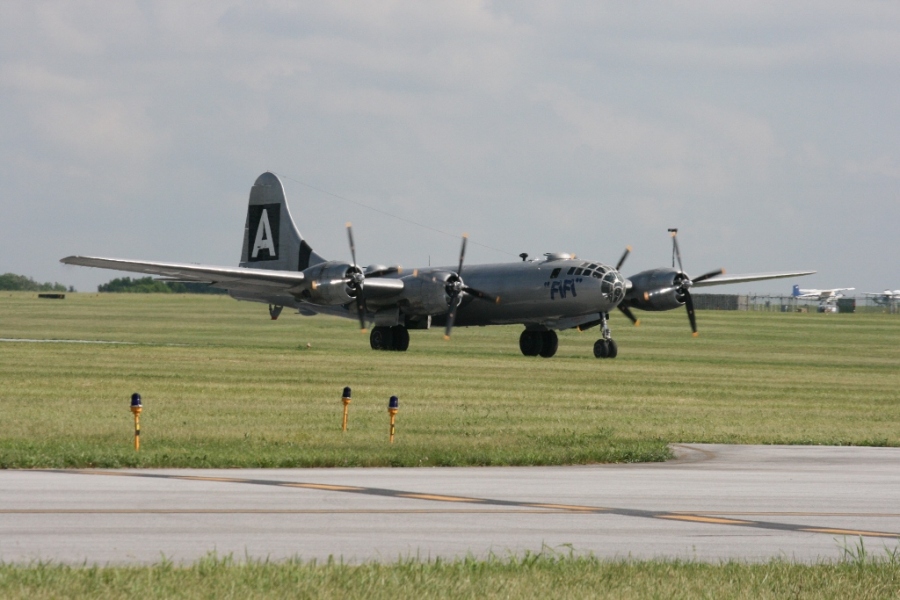The Boeing B-29 Superfortress was a long-range four engine heavy bomber introduced into service in 1944 with sophisticated features including a pressurized cabin and remote-controlled gun turrets. The B-29 was used with devastating effect by the United States Army Air Force against the Japanese in the Pacific theatre of World War Two (this was the aircraft that basically ended the war in 1945 by dropping 2 atomic bombs on Japan and then by the United States Air Force in the Korean War (1950-53) against communist forces.
In Korea, B-29’s initially flew on daylight bombing raids but with the introduction of the Mikoyan Gurevich MiG-15 jet fighter in 1950 by the Communists (at first flown by Soviet pilots), around 30 B-29’s were shot down. They were then switched to night raids and continued successfully in that role for the rest of the war.

The two B-29’s that dropped the Atomic bombs on Japan (following a final ultimatum to surrender that was ignored) were called “Enola Gay” (named after the pilot Colonel Paul Tibbets Mother) which dropped “Little Boy” on Hiroshima on August 6th, 1945 and “Bockscar” (piloted by Major Charles W. Sweeney), which dropped “Fat Man” on Nagasaki on August 9th, 1945. This second atomic bomb and the horrific destruction of atomic warfare finally forced the surrender of Japan. The aircraft then became 2 of the most famous aircraft to take to the skies.



Both aircraft have been preserved and are on display today in museums in the United States (“Enola Gay” is a the Steven F. Udvar-Hazy Center in Chantilly, Virginia and “Bockscar” is at the National Museum of the USAF in Dayton, Ohio). On previous travels in 2009 and 2010 I have seen them both and just a few days ago I saw “Enola Gay” once again. Such a large aircraft, gleaming in its silver polished finish, it is hard to not be impressed by the B-29.


Between 1943 and 1946 almost 4,000 B-29’s were constructed, but today only 26 complete airframes remain either in museums or under restoration (with a further 8 incomplete airframes) and only one of these is still flight capable. This B-29A built in Kansas was delivered to the USAAF in 1945 and retired from service into desert storage in 1958. She is known as “Fifi” and is operated by the Commemorative Air Force of Texas who acquired the aircraft in 1971. They were able to get her back in the air in just 9 weeks! Full restoration was much longer and took 3 more years of hard work.

“Fifi” is a regular performer at air shows around the United States and today I was lucky enough to see this magnificent aircraft fly at the World War Two Weekend hosted by the Mid Atlantic Air Museum at Reading, Pennsylvania. Given her flight status I think she is easily the third most famous B-29 and I am glad I finally got to see her fly.


[…] come to see two World War Two era bombers. “Fifi” which is the worlds only flying Boeing B-29 Superfortress and also a Consolidated B-24 Liberator. Alas the latter had engine mechanical problems and did […]
LikeLike
[…] aircraft from World War One and World War Two. These include the famous Boeing B-29 bomber Enola Gay and some very rare Axis aircraft from Germany and Japan. The collection includes many rare […]
LikeLike
Reblogged this on War Machine Museum.
LikeLike
[…] https://acesflyinghigh.wordpress.com/2013/06/09/enola-gay-bockscar-fifi/ […]
LikeLike